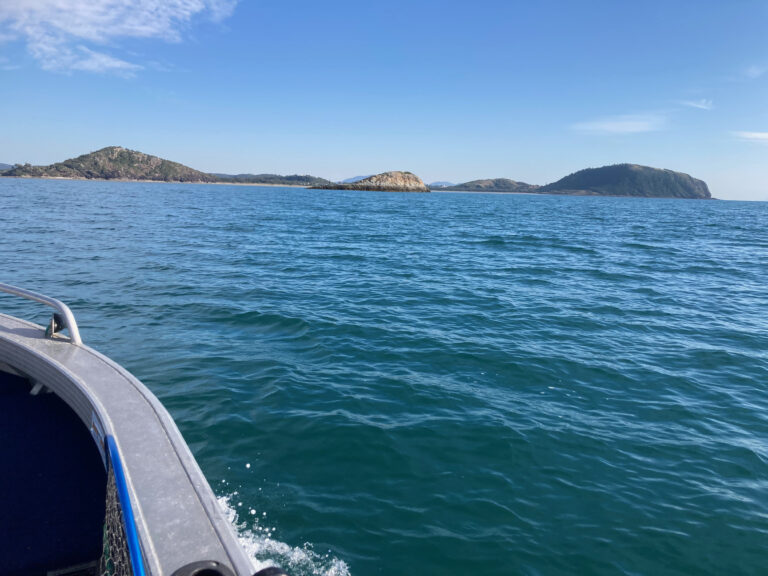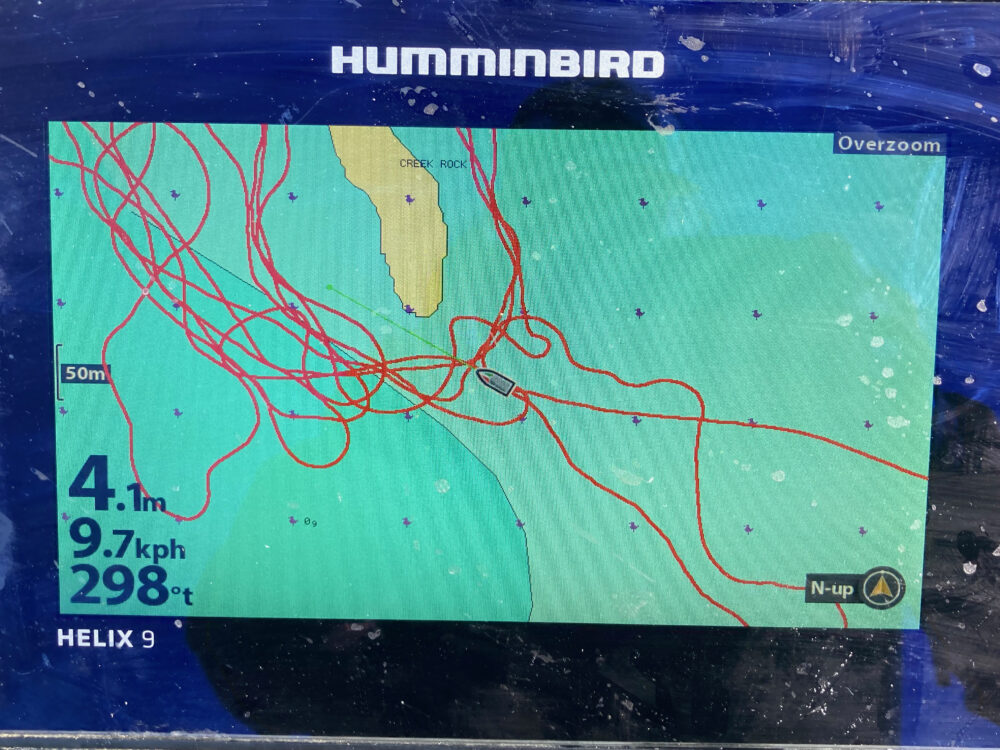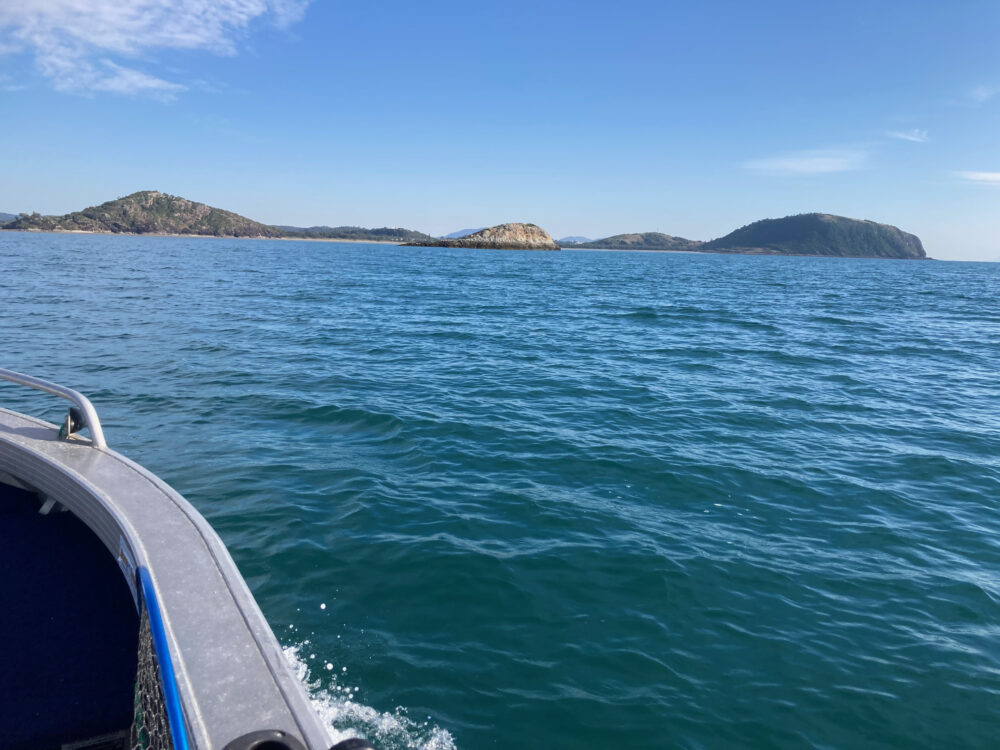Dog Day Morning – By Bill Bowtell
Bearing little, to no, resemblance to the 1975 movie, “Dog Day Afternoon”, which starred, amongst others, one of my most favoured actors, Al Pacino, this above title highlights a productive, and fun’ early morning fishing session on another of my favourites, the Queensland school mackerel; commonly referred to as, ”Doggie mackerel”, or just plain, “Doggies”.
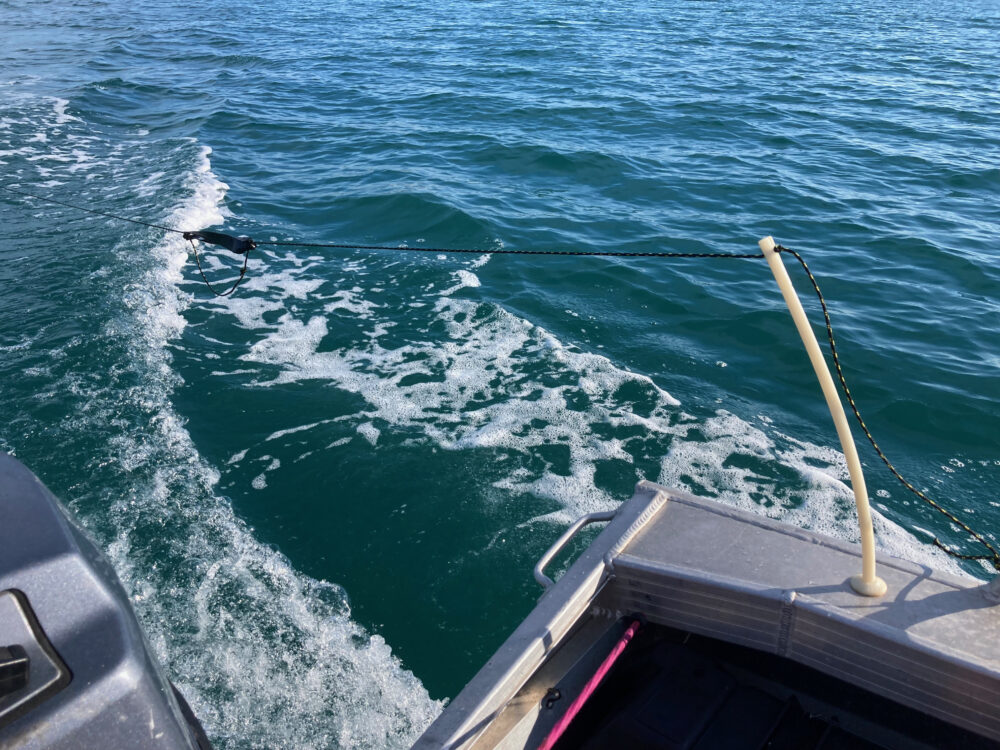
A plastic springer stick and rubber. Both absorb the power of the strike and holds the fish when working two lines.
Unlike the movie, based on a 1972, real-life, botched bank robbery in Brooklyn, New York by John Wojtowicz and his partner, Salvatore Naturile, my morning in, and around, the inshore shoals, reefs and islands of Keppel Bays was a satisfying success. It had been quite a while since I had targeted the humble, but sporty, doggie mackerel (Scomberomorus queenslandicus)
The main driver behind the early June morning start was actually not to chase doggies, but instead, to seek out a couple of wolf herring (ribbon fish) to provide troll baits for that prime mackerel, the Spanish mackerel (Scomberomorus commerson) which had started to show up in numbers around the outer islands, both to the north and east of Keppel Bay. The wolf herring took a bit of finding: the doggie mackerel didn’t.
Keppel Bay has always been known for its population of all the mackerel species – Narrow Barred Spanish Mackerel (Spaniards), Broad Barred Mackerel (Greys), Spotted Mackerel (Spotties), School Mackerel (Doggies) and the least known Shark Mackerel (Scaly).
When I first came to Yeppoon in 1974, and started to fish the waters of Keppel Bay, to catch doggie mackerel, was as simple as going to the rock wall base of Double Heads and tossing out a chrome lure and winding it in. Especially so, if the greenback herring were schooling. Today it is much the same, but there are caveats.
Doggies are primarily a late Autumn arrival in Keppel Bay, staying for up to five months before departing late Spring. Although these events can vary by a full moon phase, which takes a calendar month to complete. This variation primarily depends on two major factors – wind direction and the presence of the migrating schools of baitfish. If these two factors remain favourable, then consistent catches of doggies can occur late into the season, even up to the Christmas/New Year periods of late December, early January.
Doggie Mackerel are primarily an inshore schooling fish. They enter areas such as Keppel Bay and other parts of the Capricorn Coast and hang around those features which harbour the migrating bait schools. These places include low shelves of rocky reefs; isolated bommies in otherwise featureless ocean areas; along the edges of foreshore gutters and rocky headlands; as well as, holding in the deeper channels and current lines that occur around the further offshore islands of the Keppel Group. These congregations and aggregations occur regularly, and systematically, once they enter Keppel Bay.
Hummocky Island, off of the north east corner of Curtis Island in the southern sector of Keppel Bay would show the first sign of the doggies entering the bay. From here the fish move up into the bay proper, following the schools of bait to such places as Liza Jane Shoals, Humpy Island, the islands and shoals off of Emu Park, before heading into the central bay around Rita Marda reef and, the waters around Iron Pot Island and Double Heads.
Iron Pot Island off of Kemp Beach attracts schools of bait. It makes sense that the doggies follow. In years gone by I have fished in company of more than twenty other boats at any one time, all jockeying for a place along the western side of Iron Pot, where the doggies would school up “en masse”.
At times it was pandemonium as lines and fish were tangled, anchors were pulled and positions lost, some boats even collided. It was chaos.
These early mass forays into the first run of doggies saw most anglers using ganged hooked rigs of either 3×4/0’s, or 4×3/0’s, baited with pilchards for bait. Most used about 30cms of wire, either seven-strand No.8, or Mason SS 44lb. Line was around the 10kg b/s and a reel; spin or baitcaster, capable of holding at least 150m of line, was preferred. Rods varied, but were of a size suitable for turning the head of these lesser mackerel species, which generally ranged between 1-4kg in weight. My outfit back in those days was a Mitchell 307 reel, mated to a custom built Butterworth MT684 rod. It worked well, and on those occasions when full pulling power was needed, such as when a 20kg Spanish mackerel got in on the action, the outfit could deliver. Like I said “suitable for turning the head”. The Spanish mackerel certainly caused a ruckus amongst those targeting doggies.
In mid winter the Keppel Bay doggies can be found up along Farnborough Beach and on the inside of the outer islands of the bay. These fish are feeding on the many schools of anchovies and frog-mouth pilchards which frequent those low, shallow, hard-bottomed areas that appear in the northern sections of the bay just wide of the Bangalee access.
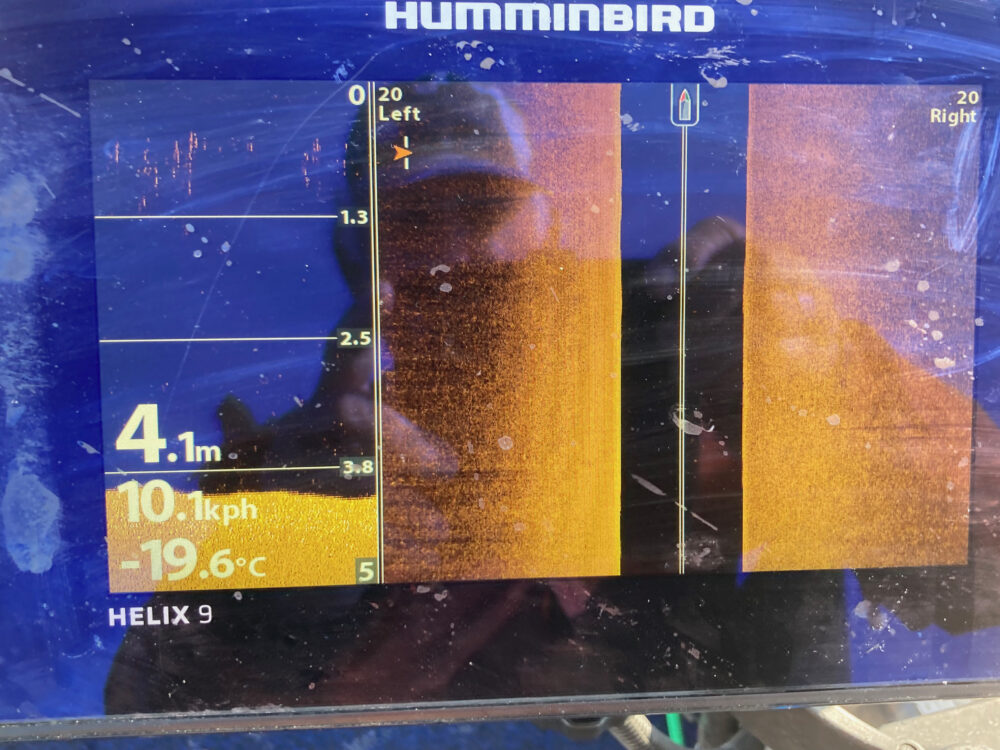
Patches of bait at the edge of the drop-off. No, the Temp wasn’t -19.6*C. But the speed was an ideal 5.5 to 6knots.
In past years, this was known as Farnborough Reef. In reality it wasn’t a reef, but in fact a long strip of sea floor of broken shale interspersed with large patches of sea grasses and soft corals. It ran the full length of beach from the mouth of Barwell’s Creek to about two kilometres north of “Vanishing Point” (that turn in the beach where the Capricorn Resort now sits). The weed started at around the 300m mark and extended seaward to around the 1200m mark. Those in tinnies absolutely loved it: plenty of fish and very accessible.
Because of the size of the patch various methods to catch the doggies were used. For the recreational fisher, floating baits was the most popular, followed by using chrome lures – Wonder Wobblers, ABU Tobys, Pegrons and Taipans were the most popular. Today it is the ever-reliable, locally produced “Flasha” lure by local fisher, Gav Nash.
However, when the fish were movingand needed to be tracked down, trolling silver spoons was popular. This rig was simple. It was one used by the commercial fishers of the town and quite a few of the recs picked up on it. The rig consisted of: ten metres of 5mm braided rope, tied off to a swivel. Then 8 metres of 80lb mono line, tied off to another swivel. Then three metres of 80lb mono with a running 8oz barrel sinker tied off to another swivel. The final section of the rig could be either a fine wire, or mono line (I used 60lb), of 5 metres in length. The spoon was a No.5 Drone “Barramundi”. Deadly!
The trick in using this rig was to work the lure by a series of arm movements. My action was (and still is) a long pull, drop back, then two short sharp pulls, followed by a longer drop back. The end of the braided rope cord is always tied to the bow rail of the dinghy so if a fish hits on the long drop back, the line is secure. To assist in the stress on the rig when a fish hits, a rubber ring cut out of an old tyre tube used as a “springer” along the line. It works well. Trolling is a good way to locate the fish.
Apart from the recreational activity on the doggies, the fish were highly targeted by the commercial sector, harvesting for the local and interstate market. Originally this was only undertaken by a bunch of dedicated line fishers. However, with the advent of the Japanese nylon net coming more readily available during the late 1960’s and into the 1970’s, the netting of the Keppel Bay doggies almost wiped out this stable population.
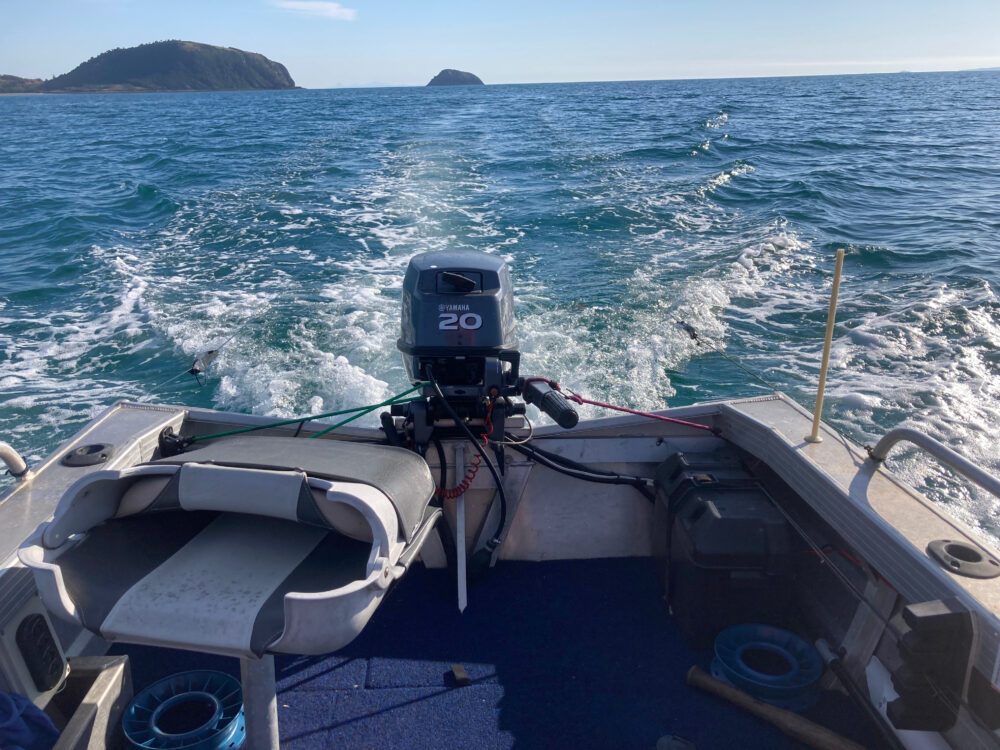
Running south through Keppel Bay with two flat lines. Note the springer rubbers. The “priest” is on the floor.
Most of this netting of the doggie mackerel took place on those nights of the dark moon and into the first and last quarter phases, when the light of the moon was either non-existent, or at its weakest. The reason being that the moon light would show up the nylon net and the fish would avoid it. On those dark nights they would swim right into it and get caught. This was “set gill netting”. The technique of “Ring-netting” was used during daylight hours and had drastic results on the lesser mackerel populations, including greys and spotties. Following strong representation to Fisheries by recreational and commercial line fishers, about the practice of ring netting, new regulation saw this practice banned and a special “Keppel Bay net” of only 200m in length introduced. This action possibly saved the Keppel Bay aggregations of doggies and spotties.
Towards the end of July and continuing well into September the doggies head further offshore in search of one of their most favourite foods – the squid. Here the fish are found out over the soft coral and weed beds adjacent to the continental islands of the Keppel Group. Places such as Sykes Reef, 40acre Paddock, Man and Wife Rocks, the northern face of Outer Rock, Humpy Island, Hannah’s Reef and the reefs on the western side of North Keppel Island, all hold schools of doggie mackerel.
These fish may be of the same stock as the fish that first entered the bay some three months before hand. Of that there is some conjecture. That they are of a different year class; there is no conjecture. The offshore fish are broader, thicker and range between 2.5kgs up to 5kgs. I have even caught several fish in the 6-7kg bracket over the years. The gut content of these larger fish is primarily squid and bottom ranging reef dweller such as fusiliers, damsel fish, small wrasse, and other fish I refer to as “fish tank fish”.
The doggie mackerel schools still turn up in Keppel Bay but their numbers are far less than those of when I first came here back in the mid 70’s. However, they are still in sufficient numbers that make them a viable, and worthwhile adversary which to target.
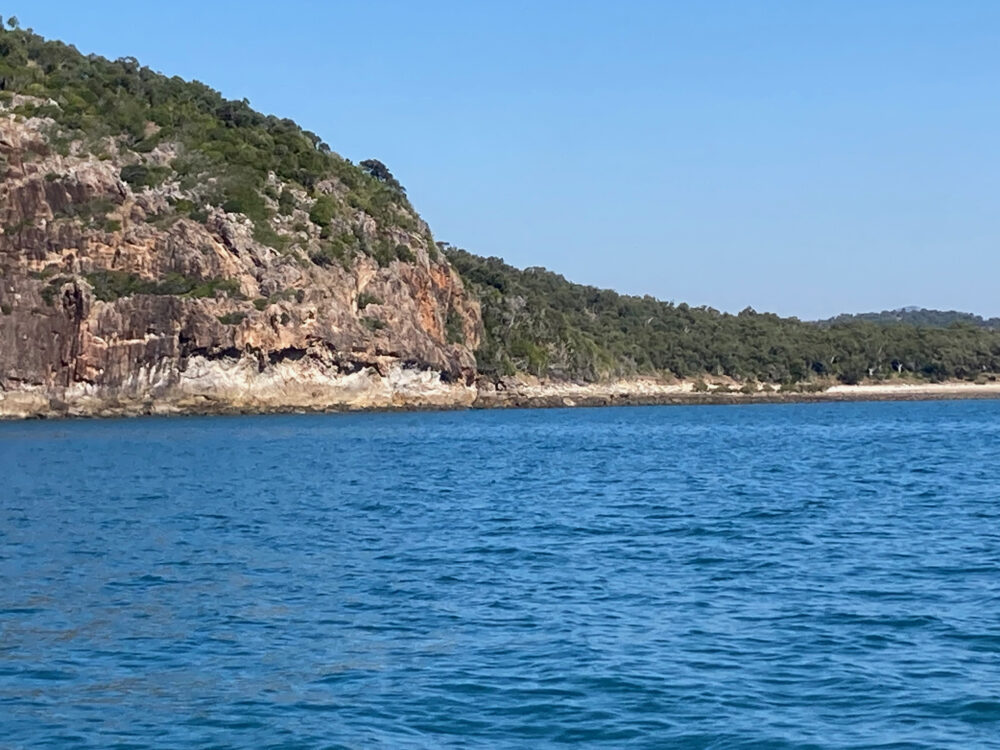
Kemp Beach hill (Northern end). Note the shallow broken rock where it meets the sand. A good place to search.
My early June, early morning run, saw me working all of the headlands and rocky reefs between Emu Park and Yeppoon – the main beaches and centres of general activity. I had missed out on finding a few wolf herring, and equally so, in finding the bait schools which had been so prevalent from the headland of Wreck Point when out spotting the previous day. I knew that, if I found one, then the other would not be far away. At 10am it was not looking good. I motored up the coast looking for birds and any sign of activity.
The water was 3 metres deep and the tide was running out. The beach was becoming rapidly exposed. Two lone terns, dipped and dived in the slop that was breaking along a shoal of rock situated across from the headland. From past experience, I stopped the dinghy, stood up and looked around in the direction of the beach. From the top of the ice box I could see a silver flicker just on the seaward side of the break. The terns dipped and dived again.
Two No.4 Drone, Barramundi spoons, fell back into the wake of the little 3.85m dinghy. The 8oz sinkers dropped as the remaining line of the rigs flicked off of both spools. The two lines were set. Both tied off to the bow rails. Both with springer rubbers. I worked the starboard line: long stroke, then two sharp raps, before a long drop back. The port side line ran flat beyond the wash. The throttle set the speed at 6 knots (approx. 11kph). I ran the edge of the seaward gutter. The action of the spoon could be felt through the line and right back to my hand.
A flash of silver, a shower of little baitfish, a frantic dive by the terns, and a slashing double strike: one on each line. Doggies!
I swung the boat to starboard and worked the fish back to the boat. This had two effects. One, it allowed me to work around the perimeter of the schooled fish (and not through them); and two, it kept tight the port side line, dragging the fish along. Both fish were landed. A third fish was hooked from the school on the starboard line, even before the port sideline had straightened along the troll path. The boat continued to circle the school. With three fish landed I felt that I was back into the swing of things. Another single wrap and another doggie hit the deck and into the esky. It felt good.
These fish were in the 2.5 – 3kg range. They were fat and thick. I needed fish, and took my limit of ten. They were still biting when I left. More terns showed up and harassed the anchovies. Along the gutter a flash of silver.
A “Dog Day Morning”? Not likely.


